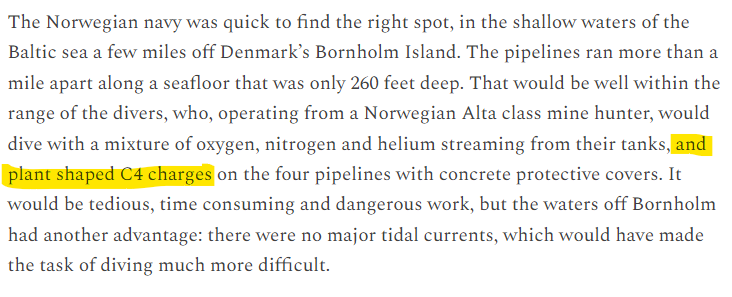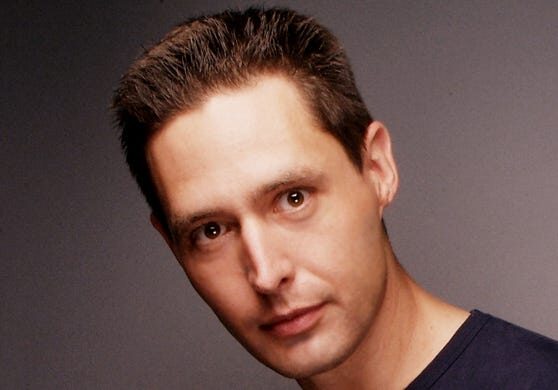Lately, Siggelkow directed both digits of his IQ to the problem of debunking Seymour Hersh's Nord Stream story. His objections are mostly the usual stuff that everyone is complaining about, but at some point his beleaguered brain stumbled across what he thought was new and heretofore undeboonked detail. Specifically, he found Hersh's report that divers would "plant shaped C4 charges" on the pipelines wildly improbable, because C4 charges do not generally come in the form of plants.
With the help of an equally absurd "explosives expert" named David Domjahn, who looks like this:
and who runs a creepy website where he talks about how exciting it is to be licensed to use explosives and how blowing things up is full of artistic possibilities, Siggelkow penned four full paragraphs debunking the possibility of plant-shaped C4 charges. All four of these paragraphs somehow made it through the entire Tagesschau editorial process unmolested and appeared on their website yesterday:
Explosives in plant form unlikelyWithin hours, Siggelkow and his crack fact-checking team were widely lampooned, and the article was swiftly corrected, complete with this brief and humiliating lesson on the various meanings of "plant":
There is also uncertainty about the details of the detonations. Hersh writes that the divers placed the plastic explosive C4 "in the form of plants on the four pipelines with concrete protective covers." Only three of the four pipelines were destroyed, however, and one Nord Stream 2 pipe remains undamaged. Whether explosive charges failed or the attackers spared a quarter of the capacity is unclear as of today.
Additionally, experts say the seismographic recordings of the explosions show that the detonations must have had a TNT equivalent of several hundred kilogrammes. "It would be a safer bet to use 300 to 400 kilogrammes of C4 explosives per detonation," says David Domjahn, a lecturer in explosive technology at the Karlsruhe Institute of Technology (KIT). Against this background, the thesis that the explosives were placed in plant form is "unrealistic".
"The Nord Stream 2 gas pipeline was just recently completed, so plant growth on the order of 300 kg would have required a corresponding amount of time to grow and so wouldn't be be suitable for camouflage," says Domjahn. The shape of the plant also raises questions, he adds. "Thick tree roots - which are unlikely at a depth of 80 metres - could be simulated with plastic explosives. When mimicking the filigree structures as on seaweed, the challenge is not to fall below the so-called limiting diameter of the explosive."
Due to the plasticity and associated fragility, Domjahn considers it "impossible" that inconspicuous plant dummies robust to the water currents could have been used. The lack of splitting at the broken ends of the pipe also speaks against the thesis. It's likely that the explosive charges were not placed directly on the pipelines, but at some distance from them, in order to achieve a "pushing effect" through the intervening water and at the same time to conceal the traces of the explosives used.
Note: An earlier version of this article referred to explosives "in the form of plants." This was a translation error. Hersh writes of "plant shaped C4 charges." In this case, the word "plant" should be translated as "place." The paragraph has been corrected.There are a lot of problems with the press, but the biggest one is just that they are extremely, profoundly, unimaginably stupid.






I remember a quip from George Carlin, "Think how stupid the average person is, then realize that 50% of the people are more stupid than that."